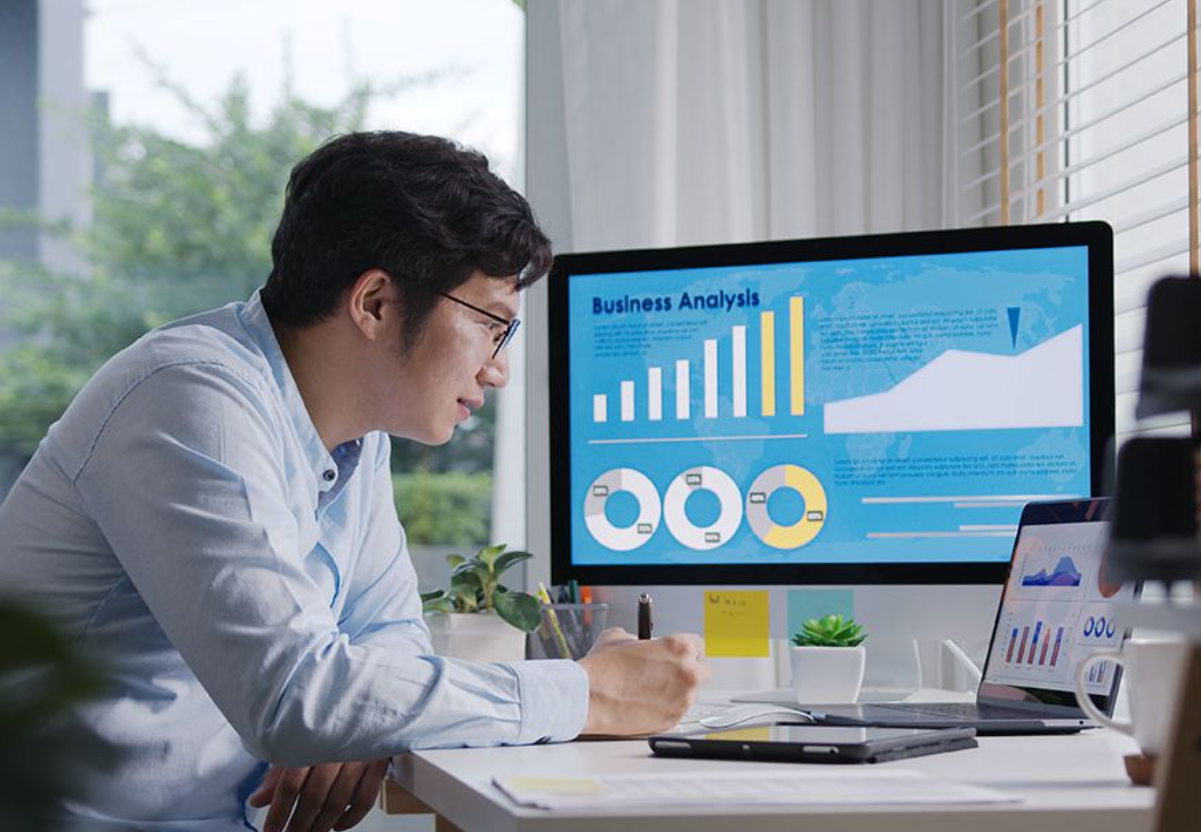Tech
Your Go-to Guide to Data Visualization

Data Visualization in the field of Data science is a technique that enables these data science professionals to present complex difficult-to-understand raw data in a visually appealing, easily digestible format.
According to the U.S. Bureau of Labor Statistics, the demand for data visualization analysts is projected to increase by 22% from 2020 to 2030, much faster than the average for all occupations.
It’s time to delve into the captivating world of data visualization, exploring its significance and various methods that empower data science professionals to communicate their findings effectively.
Understanding Data Visualization
At its core, data visualization is the art and science of presenting data in a graphical or pictorial format. By harnessing the power of visual representation, data scientists can effectively communicate complex concepts, patterns, and trends that would otherwise be lost in a sea of numbers and text.
This visual approach not only simplifies the interpretation process but also helps in making informed decisions based on accurate data analysis.
The Data Visualization Technique takes place in 4 easy-steps:
- Identifying the problem
- Choosing the right type of visualization based on the nature & structure of the data
- Refining the data based on the principles of simplicity, clarity, consistency & aesthetics
- Evaluating the visual data with the audience & getting feedback to work on
Benefits of Data Visualization:
- Enhanced exploration and understanding
- Augmented and virtual reality integration
- Immersive, engaging experiences
- AI and machine learning advancements
- Sophisticated visuals, automation
- Data storytelling gains prominence
- Compelling narratives, actionable insights
- Customization and personalization potential
- Tailored visuals for audience preferences
Why Data Visualization Matters in Data Science?
A survey conducted on more than 1000 senior executives in PWC, has revealed that organizations run on Data enabling better quality decisions than the ones with no data.
Now, let’s see how it matters.
-
Comprehension:
Visual representation of data enables quicker and more intuitive understanding, as the human brain processes images faster than text or numbers.
-
Pattern recognition:
Visualizations make it easier to identify trends, correlations, and outliers within vast datasets, allowing data scientists to draw meaningful conclusions.
-
Storytelling:
By showcasing data in a visually engaging manner, data scientists can effectively communicate their findings to a broader audience, including non-experts and decision-makers.
-
Decision-making:
Data visualization simplifies complex information, enabling stakeholders to make well-informed decisions based on empirical evidence.
Popular Data Visualization Techniques Used by Data Scientists
Bar charts:
These simple yet effective charts represent data using rectangular bars, with the length of each bar corresponding to the value it represents. Bar charts are ideal for comparing discrete categories or tracking changes over time.
Pie charts:
Displaying data as proportional slices of a circle, pie charts are perfect for showcasing percentages and illustrating the composition of a whole.
Line charts:
These charts use points connected by lines to represent data, making them suitable for visualizing trends and changes over time, particularly in continuous data.
Scatter plots:
By plotting data points on a two-dimensional graph, scatter plots reveal the relationship between two variables, helping data scientists identify correlations, clusters, and outliers.
Heatmaps:
Utilizing color intensity to represent data values, heatmaps are excellent for visualizing large datasets and highlighting patterns or areas of interest.
Tools for Data Visualization
Data science professionals can choose from a plethora of tools to create compelling visualizations. Some popular options include:
- Google charts
- Tableau
- Grafana
- Chartist
- Fusion Charts
- Datawrapper
- Infogram
- Chartblocks
Skills required for data visualization:
- Excel, SQL
- Power BI
- R & ggplot2
- D3.js
- Phyton
- Storytelling
- Domain knowledge
- Designing
4 Best Data Visualization Certification Courses:
-
USDSI® – Data Science Certification Programs
The USDSI® Data Science Certification Programs offer a comprehensive curriculum, covering essential topics like data analysis, machine learning, and AI to equip students with valuable skills for a data-driven world.
-
Udacity – Data Visualization Nanodegree
Udacity’s Data Visualization Nanodegree focuses on creating visually appealing and informative visuals to convey complex data effectively. Students learn to design charts, graphs, and visual narratives that engage and inform audiences.
-
Harvard University – Data Visualization: Communicating Data and Complex Ideas Visually
Harvard University’s Data Visualization course emphasizes the communication of data and complex ideas visually. This program teaches students how to present intricate information in an easily digestible format, ensuring their work resonates with a broader audience.
-
IBM – Professional Certificate in Data Analytics and Visualization with Excel and R
IBM’s Professional Certificate in Data Analytics and Visualization with Excel and R combines industry-standard tools to provide a well-rounded education. Students learn to analyze and visualize data using Excel while mastering advanced techniques in R, a popular programming language for data manipulation and analysis.
Conclusion
By presenting information in a visually appealing manner, you may become an expert who can better convey the findings to make informed business decisions.
However, keeping up with the upbeat data visualization techniques, tools, and trends among data science experts can be difficult, but with the right Data Visualization certification, you can become an expert. Enrol with the most trusted names today to earn big!
-
Blog1 year ago
MyCSULB: Login to CSULB Student and Employee Portal – MyCSULB 2023
-
Android App3 years ago
Cqatest App What is It
-
Android1 year ago
What Is content://com.android.browser.home/ All About in 2023? Set Up content com android browser home
-
Software2 years ago
A Guide For Better Cybersecurity & Data Protection For Your Devices
-
Latest News2 years ago
Soap2day Similar Sites And Alternatives To Watch Free Movies
-
Android2 years ago
What is OMACP And How To Remove It? Easy Guide OMACP 2022
-
Android3 years ago
What is org.codeaurora.snapcam?
-
Business2 years ago
Know Your Business (KYB) Process – Critical Component For Partnerships





















